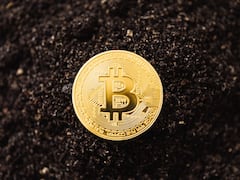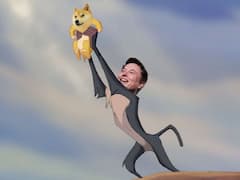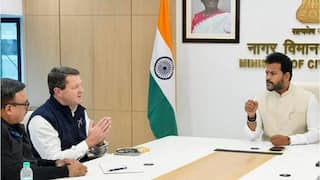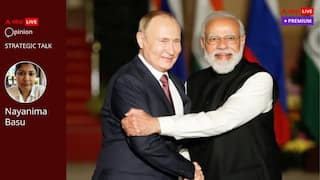Web2 To Web3: Why Transition Is Essential For Future of Gaming In India
Developers and other industry stakeholders delaying adopting Web3 risk finding themselves rapidly falling behind.

The market for blockchain gaming is still in its early stages, both in India and the world, but it is gaining unprecedented momentum in recent years. Since the beginning of 2021, the interest in the play-to-earn (P2E) idea has grown dramatically. It is interesting to note that the number of Web3 gaming users increased by 24 times, from 343,000 in January 2021 to 8.51 million in January 2022, according to a report by DappRadar.
The majority of developments related to Web3 gaming have been led by crypto-native elements. There is every reason to anticipate that the vast product and game design talent pool in India will create incredible and long-lasting Web3 economies embedded in highly entertaining games. India as a nation has a great pool of software expertise that may be used to create games at the right time as the world switches from Web2 to Web3.
ALSO READ: How Web3 Is The Future Of Internet And Why You Should Care
Understanding the use case of Web3 games
Play-to-earn
Blockchain technology enables the Play-2-Earn concept, in which players are paid for their time, effort, and skills. Currently, there is no way for gamers to make money off of their skills outside of esports.
Interoperability
It also has the potential to enable interaction across ecosystems. This is a huge breakthrough, as in traditional gaming, there is no value accrual to players, and user transactions only occur in a closed-loop ecosystem.
Think about League of Legends players sporting their Fortnite skins.
Increased financialisation
Another key benefit for users has increased financialisation.
In DeFi, users can use their virtual possessions as collateral in the same way they would use actual assets. For instance, by lending out their expensive weapons, a player could obtain funding for their upcoming combat pass.
Security
Web3 gaming also stands out for its distributed nature, one of the primary attributes of anything built on blockchain.
Unlike the centralised servers in traditional games, there isn’t a single point of failure.
Understanding the use case for creators and game developers
Larger player base
Blockchain gaming offers a chance to monetise a larger player base compared to the free-to-play model, where, on average, less than 2 percent of gamers actually buy in-game products. Due to the advantages for players outlined in the preceding section, there is a greater propensity to spend money, which makes it possible to monetise the users.
Cross-ecosystem transactions
It also enables capturing value across ecosystems: in traditional gaming, all transactions are done in a closed ecosystem. With interoperability being possible with blockchain technology, interaction across other ecosystems/games would provide a new revenue stream through on-chain royalties.
Better economic alignment
Blockchain technology has the potential to create a business model that fosters closer collaboration between developers and players, which can add value to the game, ultimately benefiting both the game and the player in the long run.
Better unit economics
When the game shares a percentage of profits with players and creators, the customer acquisition costs are reduced and player retention is higher, which results in higher LTVs than in typical free-to-play games.
The Indian Web3 gaming scenario
The number of mobile gamers in India is already around 430 million, and by 2025, it is predicted to reach 650 million. With over 90 percent of the country's $1.6-billion gaming market currently coming from mobile games, the industry is currently dominated by this segment.
On the other hand, in the first half of 2022, startups in the crypto and Web3 industries have already secured more than $1 billion in funding through 43 deals in India.
Compare that to 2021, when 39 agreements totaling $536 million were made in the space. Further to this, there are a lot of Web2 games now looking to transition into Web3.
India has started looking into ways to incorporate blockchain and Web3 tech into gaming and esports. But the majority of these initiatives are still in the development stage. For instance, Nazara intends to enter the Web3 market.
Together with its subsidiary, Next Wave Multimedia, the business is developing a Web3 cricket solution.
The fact that players are now spending more money on games and in-game purchases is another reason why gaming businesses are enthused about the potential of Web3 games in India. The perception that Indian gamers are not big spenders is currently shifting. India is a market that all gaming businesses are focusing on, and user behavior is evolving. This is crucial as purchasing NFTs to play a Web3 game is usually one of the first steps in playing a web3 game.
ALSO READ: NFTs In Web3: What A Decentralised Future Holds For Gaming, Art, More
How creators or game developers can get started with Web3 gaming
Any aspiring Web3 game developer should be aware of the key characteristics of web3 gaming and how they will affect their game. Verifiable ownership, immutability, decentralisation, and security are a few of these. These ideas can be further simplified to instances like ownership and chain-of-custody of digital assets, immutable recordings of gameplay, or completely open game development when applied to game ecosystems.
One must not overlook the fundamental economics behind play-to-earn games. The ecosystem is inherently unsustainable if more players are withdrawing money from a gaming economy than they are putting in. The main funding sources for the video game business have historically been angel investors, venture capitalists, and strategic investors. However, Web3’s decentralised structure has created a number of brand-new financing opportunities as well.
Play-to-earn is here to stay
The key takeaway here is that, while functioning in Web3, game economics is no longer restricted to the confines of the game itself. They are now a part of the larger IRL economy, necessitating careful thought and judgment to look at games. Play-to-earn is here to stay and is most likely to increase dramatically over the next few years. As a matter of fact, India has ranked first for play-to-earn (P2E) gaming adoption out of 26 countries, according to Finder’s NFT Gaming Adoption Report.
Not only just play-to-earn, but the Indian Web3 gaming ecosystem is also set to witness exponential growth in every aspect.
With the evolution that is inevitable, developers and other industry stakeholders delaying adopting this technology risk finding themselves rapidly falling behind.
The author is the Head of Growth, Tezos India, and Lead at Tezos India Game Launchpad (TIGL).
Disclaimer: The opinions, beliefs, and views expressed by the various authors and forum participants on this website are personal.






































